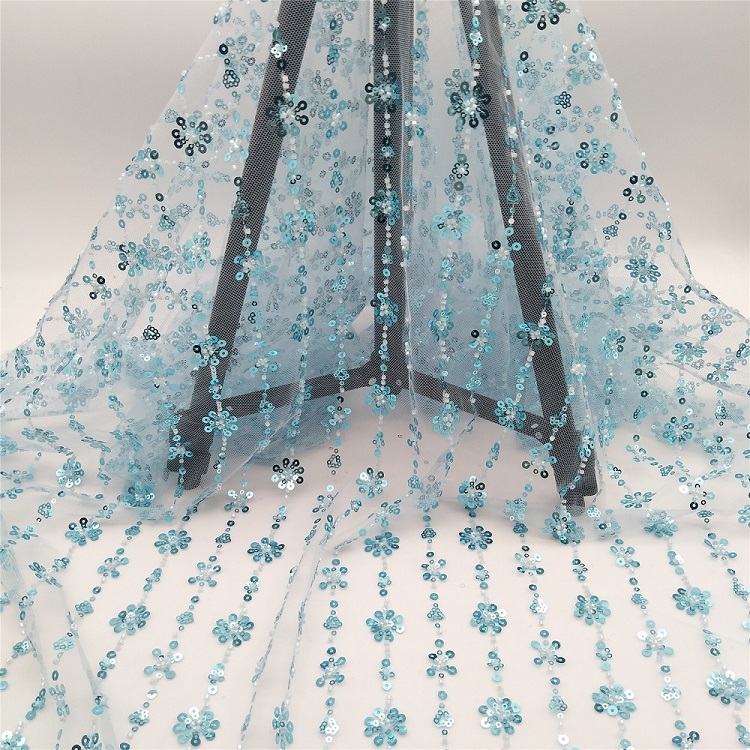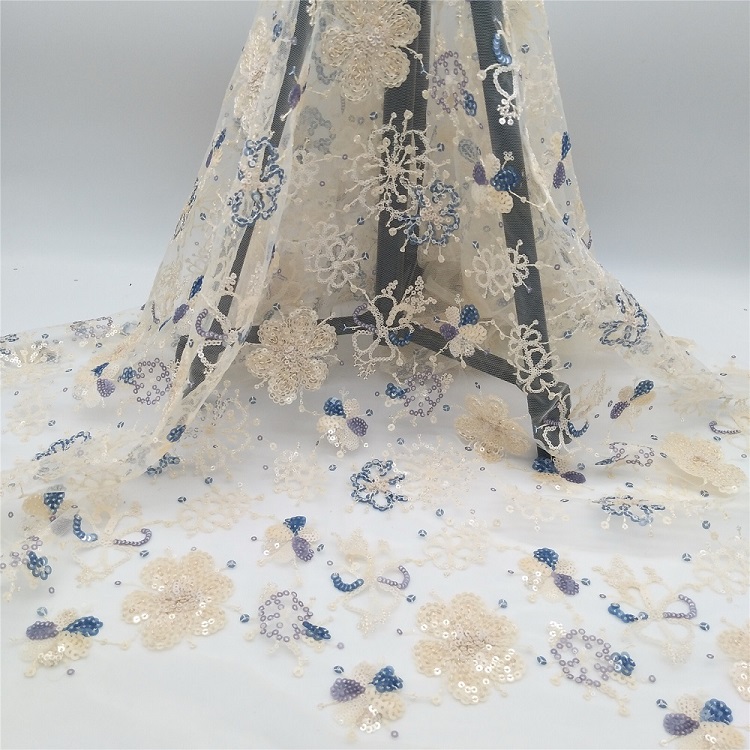The Intricate World of Lace: A Glimpse into its Rich History
Lace is a magnificent fabric, characterized by its delicate patterns and artistic interlacing, and has adorned the closets of high society and the halls of palaces for centuries. A symbol of luxury, beauty, and craftsmanship, lace has a long and illustrious history that weaves together artistry, culture, and fashion.


The origins of lace date back to ancient civilizations, where early forms of decorative openwork textiles were created using techniques such as knotting and weaving. However, it was during the Renaissance in Europe that lace truly came into its own as a symbol of opulence and refinement.

Braiding a lei with an ancient knot of string weaves history into a floral masterpiece. Each twist and turn symbolizes tradition and connection, making the lei not just an accessory, but a vibrant tapestry of heritage and beauty
Venice, Italy, emerged as a prominent center for lace production in the 16th century. Venetian lace, renowned for its intricate designs and fine craftsmanship, quickly gained favor among the European elite. As trade routes expanded, lace-making techniques spread across the continent, giving rise to various regional styles and traditions. Flemish lace, known for its delicate floral motifs, and French lace, which exuded elegance and sophistication, became highly sought-after.
Venice Lace, renowned since the 16th century, epitomizes Italian craftsmanship. Delicate, intricate, and exquisite, it embodies the city’s rich artistic heritage, adorning garments and interiors with timeless elegance

During the 17th and 18th centuries, lace reached the zenith of its popularity. European monarchs and aristocrats showcased their wealth and status by adorning themselves and their homes with lace embellishments. Royals commissioned grand lace garments and extravagant lace accessories, while lace curtains and tablecloths graced the palaces of the elite.
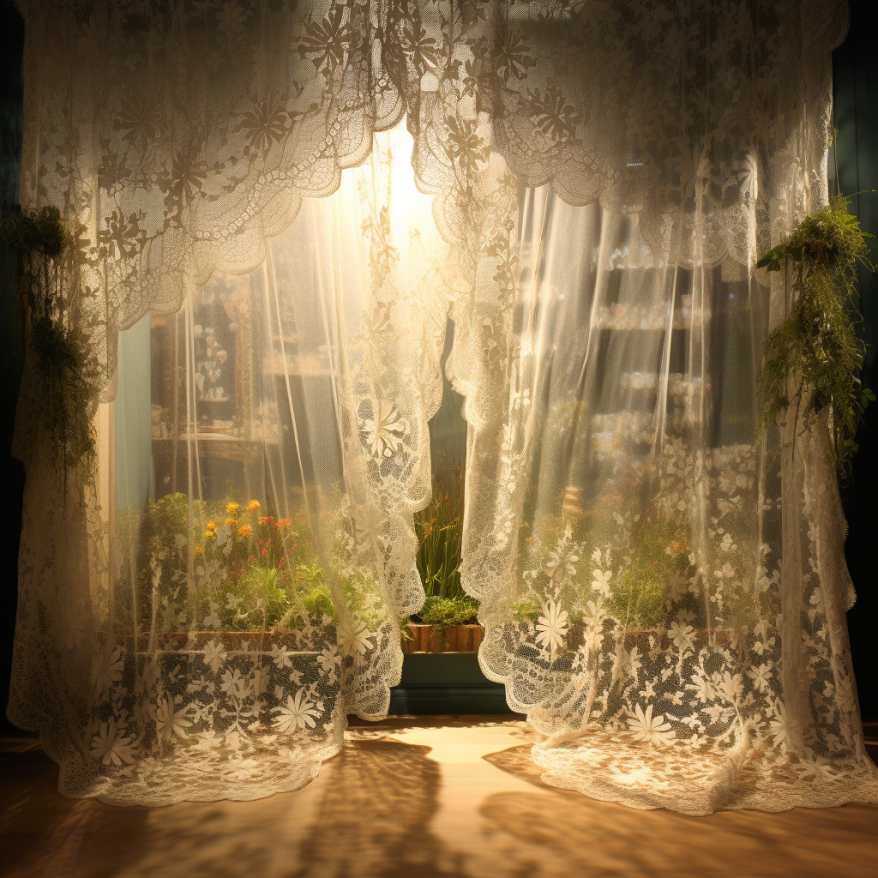

The painstaking craftsmanship required for lace-making was often conducted by skilled artisans, predominantly women, who dedicated countless hours to create these intricate designs. Their expertise was passed down through generations, resulting in the emergence of lace-making schools and guilds.
As lace production became more accessible, it found its way into the attire of all social classes. While the nobility flaunted their lace-trimmed garments, lace also became a symbol of femininity and sensuality in fashion, adorning women’s clothing with an air of romanticism.
Lace continued to evolve throughout the 19th and 20th centuries, adapting to changing fashion trends. It adorned wedding gowns, eveningwear, and lingerie, becoming an enduring symbol of bridal elegance and sophistication. In the 21st century, lace remains a versatile fabric, adorning both traditional and contemporary designs, illustrating its timeless appeal.

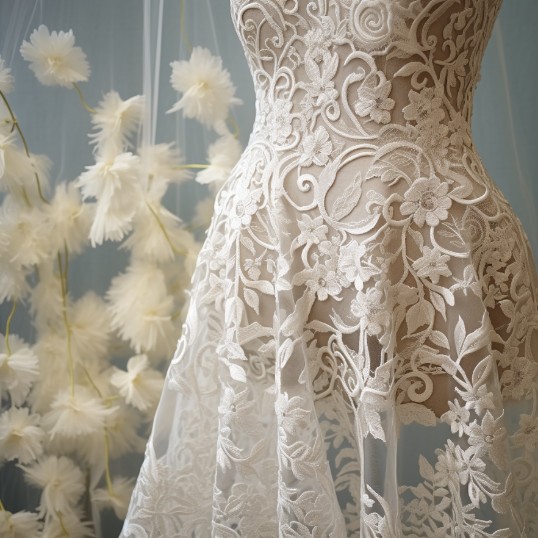
Today, lace continues to capture hearts and imaginations. It embodies the delicate balance between tradition and innovation, showcasing the enduring beauty of this exquisite fabric. Whether gracing the runway, wedding ceremonies, or everyday wear, lace stands as a testament to the enduring allure of luxury, beauty, and craftsmanship in the world of fashion and textiles.
1. The Origins of Lace
While the exact origins of lace remain a topic of debate among historians, it is generally believed to have developed in the late 15th to early 16th centuries in either Italy or Flanders (part of modern-day Belgium). However, elements reminiscent of lace can be found even earlier. For instance, in ancient Egypt, some netting techniques bearing semblance to lace were employed, but these were much simpler than what we would identify as lace today.
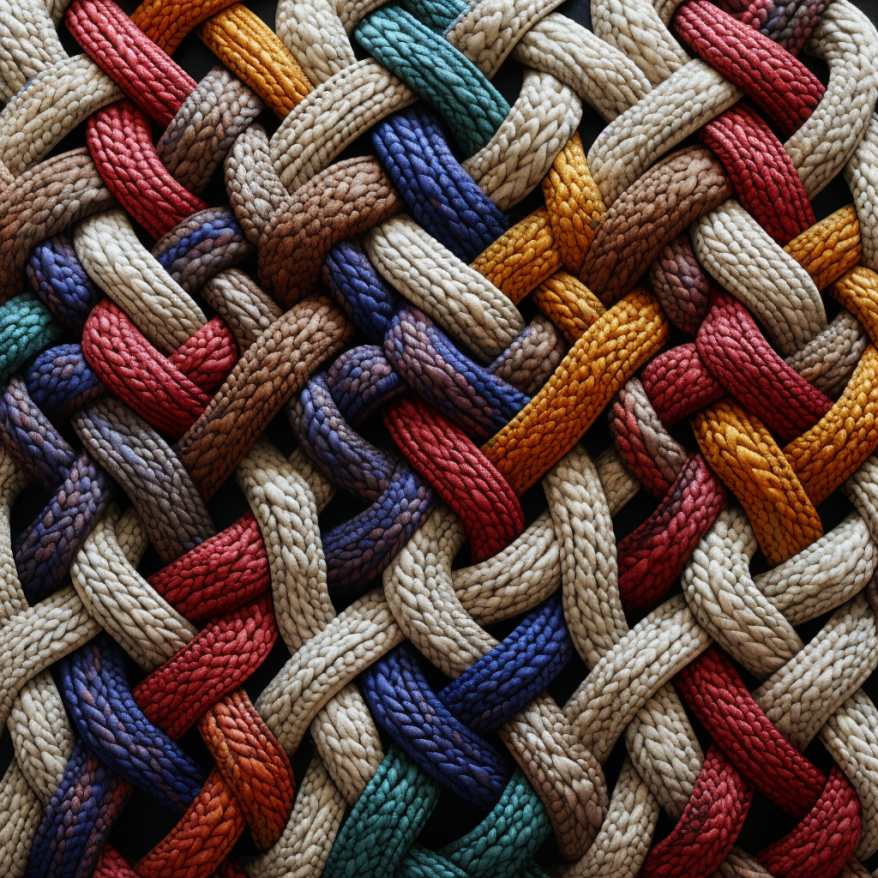
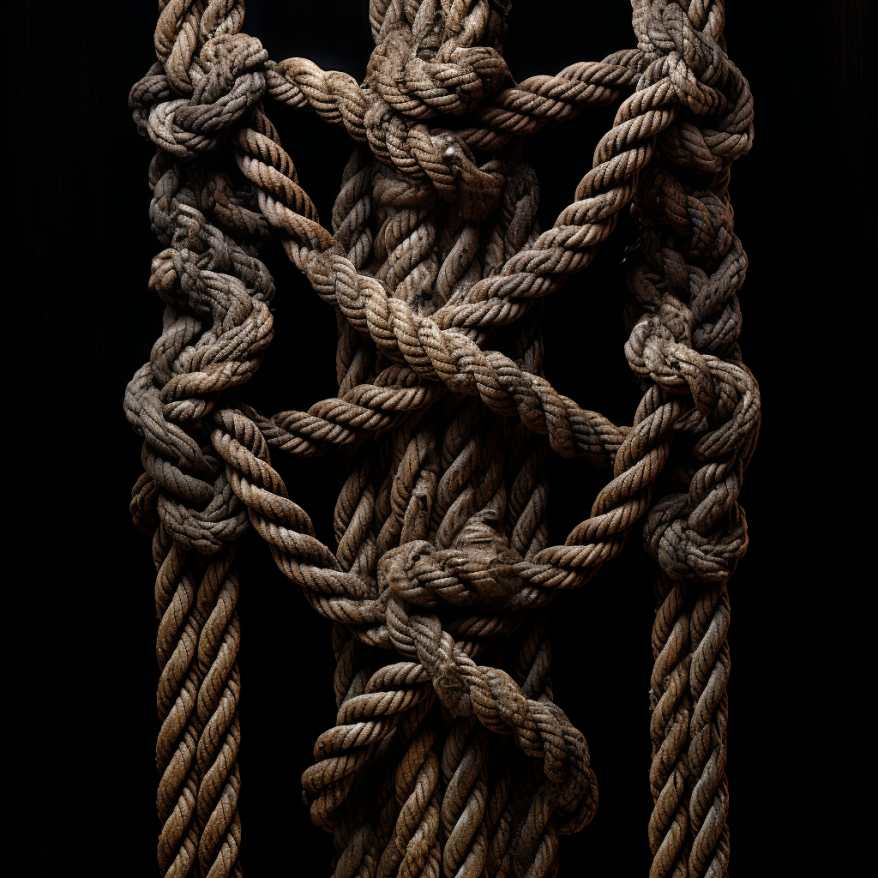
The origin of lace, shrouded in the mists of history, remains a subject of fascination and debate among historians and textile enthusiasts alike. While the exact birthplace of lace may still be open to conjecture, it is generally believed to have been developed during the late 15th and early 16th centuries in two European regions: Italy and Flanders (a historical region encompassing parts of present-day Belgium and the Netherlands).
Italy, with its rich artistic and cultural heritage, is often credited with being one of the cradles of lace-making. Italian lace, notably Venetian lace, emerged as a paragon of artistry and intricate craftsmanship during the Renaissance. The Venetian Republic, known for its opulence and refinement, became a hub for lace production, and its lace-making techniques quickly spread across Europe. The delicate designs and sheer beauty of Venetian lace earned it a cherished place in the wardrobes of the European elite.


On the other hand, Flanders, situated in the heart of Europe, was another influential center for lace production. Flemish lace, characterized by its intricate floral motifs and fine detailing, became highly sought-after. The region’s skilled artisans contributed significantly to the evolution of lace as an art form.
However, it’s essential to note that while lace, as we know it today, found its roots in these regions during the Renaissance, elements resembling lace can be traced further back in time. Ancient civilizations, including the Egyptians, Greeks, and Romans, utilized rudimentary webbing techniques that bore some semblance to lace. These early forms of decorative openwork textiles employed materials like linen and wool, though they were far simpler in comparison to the intricate lacework that would later grace the courts of Europe.
Intricacies of lace-making remained closely guarded secrets for centuries. Skilled artisans, primarily women, dedicated their lives to perfecting these techniques, and the knowledge was often passed down through familial or guild connections. The result was the emergence of regional styles and traditions, each with its unique characteristics and designs.
As lace-making techniques gradually spread across the continent through trade and cultural exchange, lace became a symbol of luxury and refinement. It adorned not only clothing but also home furnishings, and its popularity transcended social classes. The demand for lace grew, leading to the establishment of lace-making schools and guilds, further solidifying its place in history.
Secretive lace production in Venice’s heyday, a mesmerizing blend of skill and artistry, hidden from prying eyes, revealed its intricate magic in the hands of skilled artisans, creating timeless masterpieces.
In summary, while the exact genesis of lace remains a subject of historical conjecture, it is clear that this intricate and delicate fabric has a rich and storied past. Whether its origins lie in the opulent courts of Renaissance Italy or the skilled hands of Flemish artisans, lace has transcended time and continues to captivate with its timeless beauty and exquisite craftsmanship, making it a cherished part of our cultural and sartorial heritage.
2. Development in the Renaissance
The Renaissance, a period known for its flowering of arts and sciences, was also when lace began its journey to prominence. As needle and bobbin lace techniques were perfected, regions such as Venice in Italy and cities in Flanders began to emerge as the foremost lace-making centers.

The Renaissance era, celebrated for its cultural reawakening, witnessed the evolution of lace craftsmanship. Needle and bobbin lace techniques reached perfection in Venice, Flanders, and Italy, adorning fashion and interiors with intricate, delicate, and timeless beauty.
Venetian lace, especially the type known as Reticella, was one of the first recognized forms. By the late 16th century, it had evolved into a heavier, more intricate style called Gros Point. This lace featured raised work and became a symbol of luxury, often used in collars and cuffs.
The Renaissance, often dubbed the “rebirth” of art, culture, and innovation, was indeed a pivotal era in the history of lace. During this remarkable period spanning the 14th to the 17th century, lace experienced significant developments that transformed it into a symbol of opulence, craftsmanship, and artistic expression.
The Renaissance, a profound cultural renaissance, birthed a lace renaissance. From the 14th to the 17th centuries, lace evolved as a symbol of artistry and luxury, adorning garments and decor with intricate, delicate designs, reflecting the era’s flourishing creativity and innovation.

As the Renaissance unfolded across Europe, so too did the evolution of lace-making techniques. Needle and bobbin lace, in particular, saw remarkable refinements, giving birth to lace styles that would become iconic.
Venice, Italy, emerged as one of the most illustrious centers of lace production during the Renaissance. Venetian lace, in its early form, was known as “Reticella.” This style marked one of the first recognized forms of lace. Reticella lace was characterized by its geometric designs and intricate patterns, meticulously crafted by skilled artisans. It was coveted not only for its beauty but also for the sheer artistry involved in its creation.


As the 16th century progressed, Reticella lace evolved into a thicker and even more intricate style, known as “Gros Point” lace. This lace was characterized by its convex and raised motifs, which added a three-dimensional quality to the fabric. The creation of Gros Point lace was a testament to the unparalleled skill of Venetian lace-makers. This lace style became synonymous with luxury, refinement, and elegance.
Gros Point lace found its way onto an array of fashionable items, including collars, cuffs, and ruffs. These embellishments adorned the attire of the European elite, enhancing their status and style. The lavish and ornate nature of Gros Point lace made it a statement of opulence during the Renaissance, reflecting the flourishing wealth and cultural sophistication of the period.
The intricate lacework became a canvas for artistic expression, as lace-makers crafted not only geometric patterns but also motifs inspired by nature, mythology, and the surrounding world. The artistry of lace-making reached its zenith during this time, making lace not merely a fashion accessory but a form of fine art.

Intricately woven from fine threads, ancient Egyptian lace figures stand as marvels of textile artistry. These delicate creations, dating back millennia, capture the grace and mystique of Egyptian culture. Crafted with precision, they depict pharaohs, deities, and everyday life, embodying the exquisite craftsmanship of an ancient civilization that prized both beauty and symbolism. These lace figures serve as a testament to Egypt’s enduring legacy in the realm of art and innovation, offering a glimpse into a world that valued aesthetics as much as it did spirituality and history.
Beyond Italy, regions like Flanders also played a crucial role in the Renaissance lace story, contributing their unique styles and techniques to the burgeoning world of lace. Flemish lace, known for its floral motifs and delicate detailing, added to the diversity of lace styles that captivated Europe’s aristocracy.
In summary, the Renaissance was a transformative era for lace, where the perfection of needle and bobbin lace techniques led to the emergence of iconic styles like Venetian Gros Point lace. The artistry and craftsmanship of lace-makers during this period elevated lace from a simple textile to a symbol of luxury and artistic expression. These developments during the Renaissance continue to influence and inspire lace design to this day, reminding us of the enduring beauty and cultural significance of this exquisite fabric.
3. Lace Takes Europe by Storm
As lace’s popularity grew, so did its variety and regional specialties. Belgium produced the famous Brussels lace, while France gave birth to Alençon and Chantilly lace. The 17th and 18th centuries can be considered the golden age of lace. It was a time when the intricate fabric adorned everything, from clothing and curtains to bed linens.
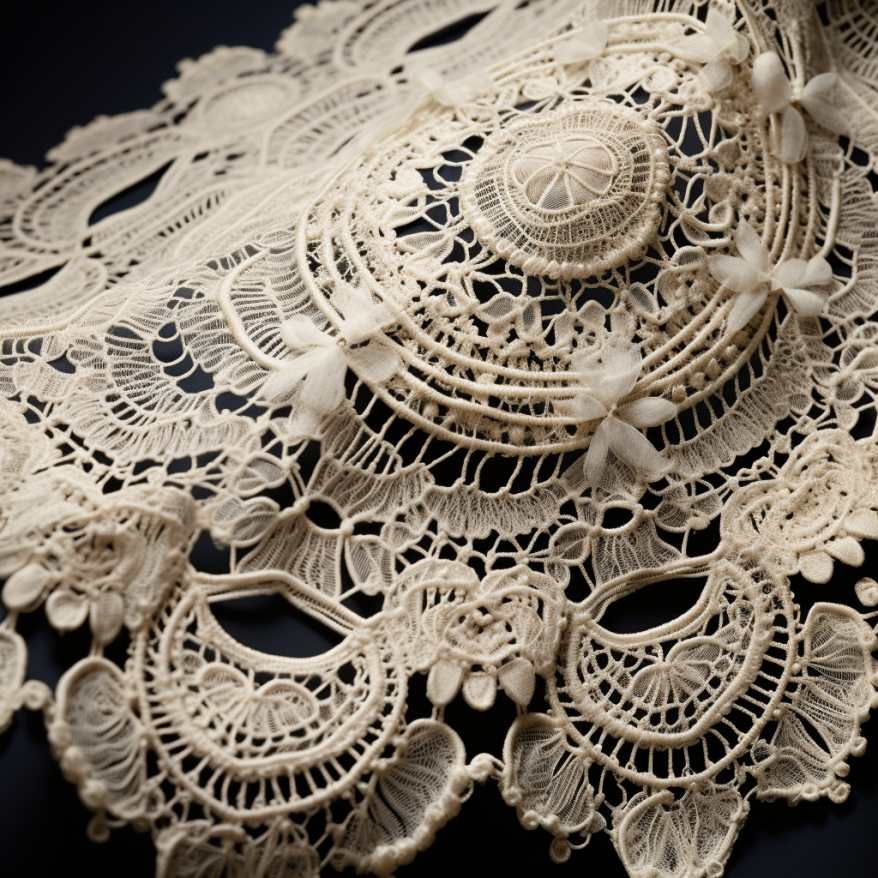

European royalty and nobility became particularly enamored with lace, using it as a status symbol. Queen Elizabeth I of England, for instance, often wore lavish lace collars in her portraits.
The 17th and 18th centuries stand as the golden age of lace, a period when this intricate fabric not only gained immense popularity but also witnessed a proliferation of regional specialties that showcased the creativity and craftsmanship of European artisans.
Belgium, in particular, became renowned for producing the world-famous Brussels lace. This delicate lace, characterized by its fine, intricate patterns and meticulous workmanship, became a symbol of Belgian artistry. Brussels lace was highly sought-after across Europe and even found favor among royalty.
France, another European powerhouse in lace production, contributed two iconic styles to the lace pantheon: Alençon and Chantilly lace. Alençon lace, originating in the town of Alençon in Normandy, was celebrated for its exquisite floral designs and intricate detailing. It earned the moniker “Queen of Lace” for its regal beauty and was often used in bridal gowns and other ceremonial attire. Chantilly lace, hailing from the town of Chantilly in northern France, was characterized by its delicate, sheer ground and graceful motifs. It exuded an air of elegance and sophistication, becoming a favorite among the French aristocracy.
France, a lace artisan, offers Alençon and Chantilly lace, icons in the lace world. Alençon, “Queen of Lace,” from Normandy, boasts floral intricacy, adorning weddings and ceremonies. Chantilly, from the north, captivates with sheer elegance, beloved by French aristocracy, a symbol of sophistication.

The allure of lace transcended clothing, extending to home furnishings. Lace curtains, tablecloths, and bed linens became commonplace in the homes of the European elite. These lace accents added an air of opulence and refinement to interiors, transforming ordinary spaces into settings fit for royalty.
Speaking of royalty, European monarchs and nobility were particularly enamored with lace during this era. It was not merely a fashion statement but a status symbol. Queen Elizabeth I of England, for instance, was renowned for her love of lavish lace collars, which she frequently wore in her portraits. The ornate lace collars not only showcased her regal bearing but also reinforced her image as a fashion icon.
Lace became a vital part of royal and noble wardrobes, adorning garments ranging from gowns and mantuas to cravats and cuffs. It was a means of displaying one’s wealth and taste, with each European court vying to outdo the others in the extravagance of their lace embellishments.
The intricate craftsmanship required for lace-making was a closely guarded skill, often passed down through generations within families or lace-making guilds. It was a labor-intensive art that required great patience and precision.
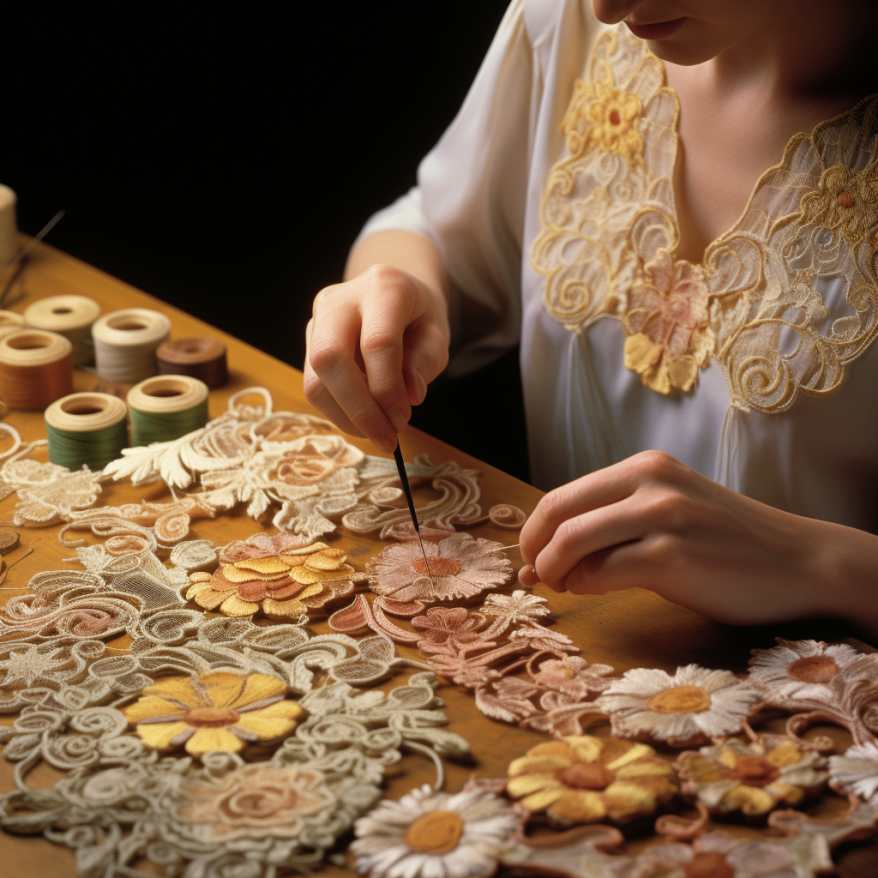
Crafting lace demands unwavering patience and exquisite skill. Meticulously weaving delicate threads, artisans create intricate patterns, turning simple fibers into timeless works of art, where precision and dedication converge to shape a testament of human craftsmanship
In conclusion, the 17th and 18th centuries marked the zenith of lace’s popularity in Europe. Regional specialties like Brussels, Alençon, and Chantilly lace showcased the diversity and artistry of lace production. As lace adorned not only clothing but also interiors, it became a symbol of luxury and refinement that captivated the European elite, including figures like Queen Elizabeth I, who left an indelible mark on the history of lace as a fashion statement and status symbol.
4. The Industrial Revolution and Machine-Made Lace
The 19th century brought the Industrial Revolution, and with it, machines that could produce lace much faster and cheaper than hand-made methods. The introduction of the bobbin-net machine by John Heathcoat in 1809 was revolutionary. This sparked a significant industry shift, making lace accessible to the masses.
The transition from hand to machine lace production marked a seismic shift in textile history. In the 19th century, innovations like John Heathcoat’s bobbinet machine revolutionized lace-making, accelerating output and accessibility. While preserving tradition, this shift democratized lace, making it more affordable and accessible to a wider audience. Yet, it also sparked debates over craftsmanship and the value of handmade vs. machine-made lace, a dynamic that continues to shape the industry today.

Though machine-made lace could not initially replicate the intricate detailing of hand-crafted lace, advancements over time bridged this quality gap significantly.
The 19th century ushered in a period of profound transformation in the world of lace, thanks to the Industrial Revolution and the advent of machines capable of producing lace more efficiently and affordably than ever before. This era marked a significant departure from the centuries-old tradition of painstakingly crafting lace by hand.
One of the groundbreaking developments during this period was the introduction of the bobbin-net machine, a creation that would forever change the landscape of lace production. In 1809, John Heathcoat, an English inventor, unveiled this revolutionary machine. It allowed for the rapid and precise weaving of lace patterns, transforming the industry and making lace more accessible to a broader audience.
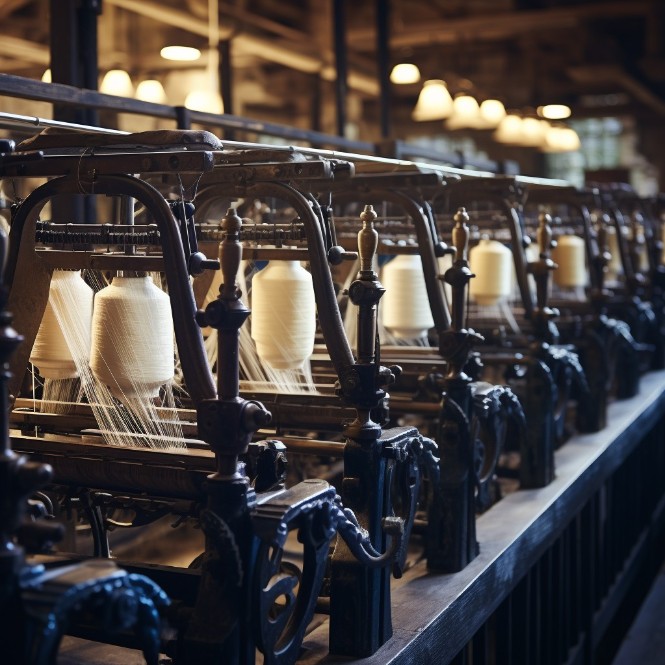
The earliest lace production machine, invented in the early 19th century, was Heathcoat’s bobbinet machine. It mechanized the intricate lace-making process, using a network of bobbins and needles to replicate the handcrafted beauty of lace, marking a pivotal moment in the history of textile manufacturing.
The impact of the bobbin-net machine cannot be overstated. It greatly increased the speed and efficiency of lace production, making it possible to create lace on a scale unimaginable with manual techniques. This innovation brought with it the potential for lace to be produced not just as a luxury for the elite but also as a more affordable and widespread textile for the masses.
However, it’s important to note that in its early stages, machine-made lace struggled to replicate the intricate and fine detailing of hand-crafted lace. While machine-made lace was more cost-effective, it lacked the nuanced artistry and delicacy of handmade lace, which had been cherished for centuries for its exquisite craftsmanship.
Nonetheless, the 19th century witnessed significant advancements in machine-made lace production. Engineers and inventors continued to refine their machines, bridging the quality gap between handcrafted and machine-made lace. Patterns became more intricate, and the range of designs expanded, allowing for a greater degree of creativity and diversity in lace production.
The industrialization of lace production not only made lace more accessible but also played a pivotal role in shaping fashion during the 19th century. Lace became a ubiquitous feature in clothing and accessories, adorning everything from women’s dresses and undergarments to men’s collars and cuffs. It contributed to the ornate and elaborate styles of the Victorian era.
Machine-made lace also found its way into home furnishings, further solidifying its presence in everyday life. Lace curtains, tablecloths, and doilies became common household items, enhancing the aesthetic appeal of interiors.
In summary, the 19th century marked a momentous period in the history of lace as the Industrial Revolution introduced machines that revolutionized production methods. The bobbin-net machine, pioneered by John Heathcoat, brought lace within the reach of a broader audience. While machine-made lace initially struggled to match the artistry of handcrafted lace, ongoing advancements in technology gradually closed the quality gap. This era not only democratized lace but also left an indelible mark on fashion and interior design, making lace an integral part of everyday life for people of all social strata.
5. Cultural Significance
Lace has always been more than just a decorative fabric. In many cultures, it held (and still holds) significant meaning. For instance:
- Weddings: Lace, especially white or ivory, is a common choice for wedding dresses. The tradition has roots in many cultures and is seen as a symbol of purity and elegance.
- Traditional Attire: Countries like Belgium and Malta have traditional dresses that heavily feature lace. Such dresses are often worn on special occasions and are a testament to the country’s lace-making heritage.
- Art and Expression: Over centuries, lace patterns have evolved to tell stories, depict nature, or symbolize religious beliefs.
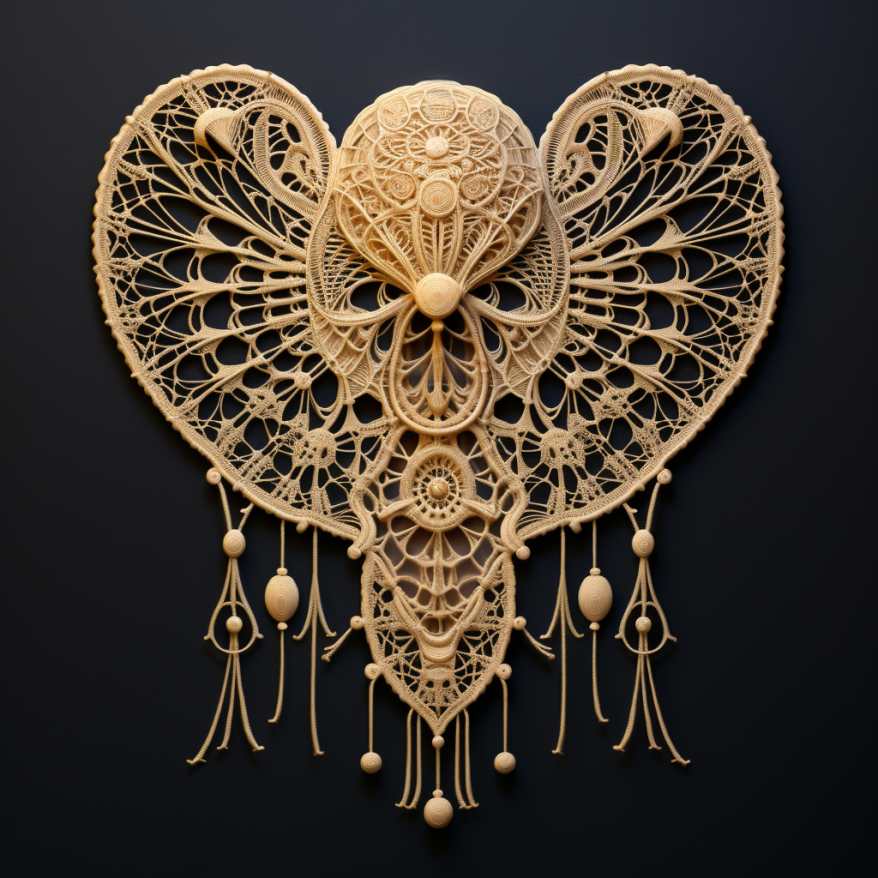

Lace, beyond its sheer aesthetic beauty, has always held a profound and multi-faceted cultural significance that transcends borders and generations. Its importance extends into various aspects of life, from major life events to traditional attire and artistic expression.
Weddings have long been a domain where lace takes center stage. The tradition of wearing lace wedding dresses, especially in white or ivory, is deeply ingrained in many cultures worldwide. Lace is symbolic of purity, delicacy, and timeless elegance, making it the perfect choice for brides on their special day. This tradition can be traced back through centuries, reflecting the enduring belief in the symbolic power of lace to enhance the significance of the matrimonial union.
In addition to weddings, lace features prominently in the traditional attire of several countries, preserving their cultural and historical heritage. Belgium, known for its lace-making prowess, boasts traditional dresses that are resplendent with intricate lace embellishments. These garments are not just clothing but also embodiments of the country’s rich lace-making heritage. In Malta, too, traditional lace dresses play a vital role in the cultural fabric, often worn during special occasions and celebrations. Such dresses serve as living testaments to the skill and craftsmanship of generations of lace-makers.
Beyond utilitarian functions, lace has also been a medium for artistic expression. Over the centuries, lace patterns have evolved to narrate stories, depict the beauty of nature, or symbolize religious beliefs. Lace-making became a form of art in its own right, with lace-makers pouring their creativity and passion into each delicate thread. The resulting lace pieces became more than mere textiles; they transformed into intricate artworks that told tales of cultures, traditions, and personal stories.
A lace dreamcatcher totem embodies ethereal beauty. Delicate threads intricately woven into traditional designs capture dreams and ward off negativity, blending artistry and spirituality in a timeless symbol of protection and serenity.
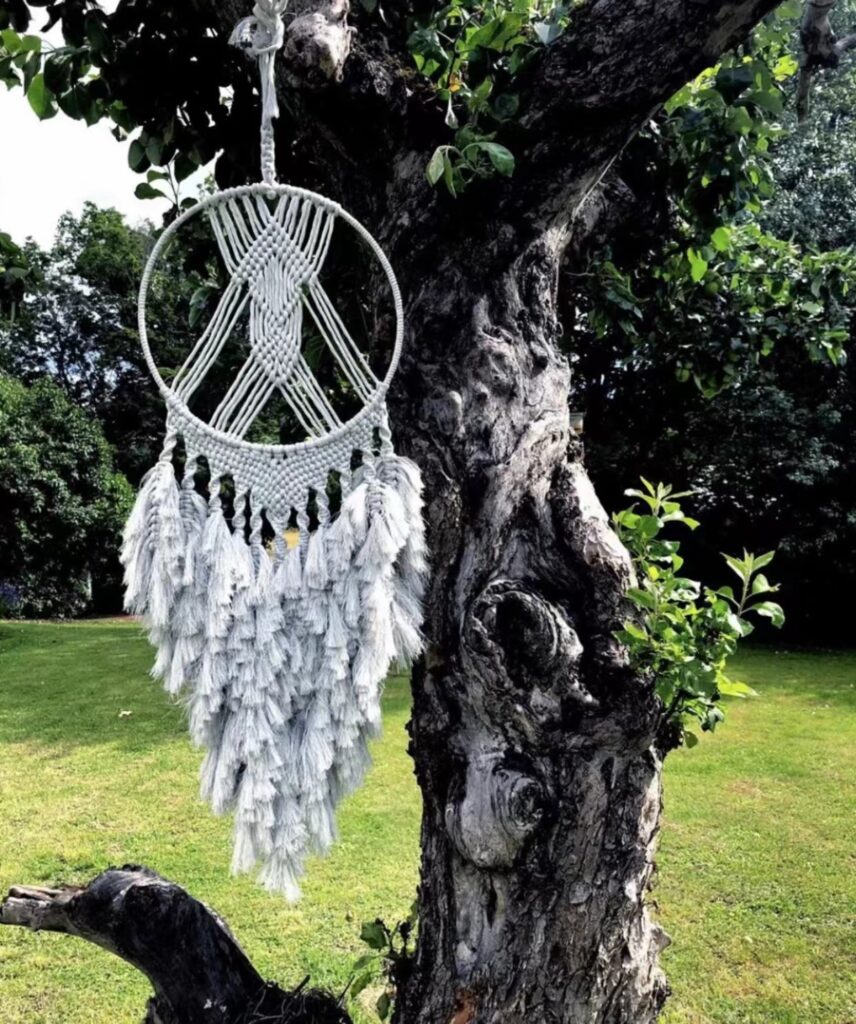
Lace’s cultural significance extends even further as it continues to influence contemporary fashion and design. Designers draw inspiration from lace’s timeless beauty, incorporating its delicate patterns and textures into modern clothing, accessories, and home décor. In doing so, they pay homage to the rich history and cultural resonance of lace, infusing it with fresh vitality and relevance.
In conclusion, lace is not just a fabric; it is a symbol of cultural heritage, tradition, and artistic expression. From weddings to traditional attire and artistic creations, lace has woven itself into the tapestry of human culture, carrying with it the enduring values of purity, elegance, and the intricate beauty of human craftsmanship. Its significance continues to evolve, making it a timeless and cherished part of our shared human experience.
6. Modern Lace
Today, lace continues to be an integral part of the fashion world. From haute couture to everyday wear, it adds a touch of sophistication and elegance. With modern technologies, new synthetic fibers, and innovative techniques, lace is constantly being redefined.
In the ever-evolving world of fashion, lace maintains its timeless allure and continues to be an integral and versatile fabric. In the modern era, lace has found a place in everything from haute couture to everyday wear, adding a touch of sophistication, elegance, and femininity to a wide range of styles and occasions.

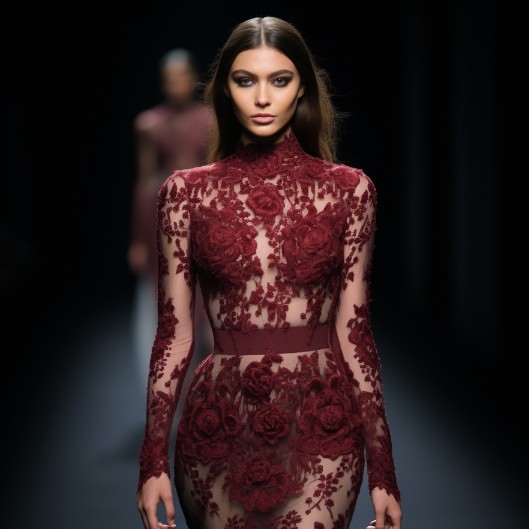
One of the remarkable aspects of modern lace is its adaptability. While lace has its roots in traditional craftsmanship, it has seamlessly transitioned into the digital age, thanks to innovative technologies and the use of synthetic fibers. This fusion of tradition and innovation has allowed lace to remain relevant and captivating in contemporary fashion.
Modern lace owes much of its versatility to the introduction of new synthetic fibers and materials. These materials often mimic the delicate appearance of traditional lace while offering benefits such as durability, elasticity, and ease of care. The incorporation of these fibers has expanded the applications of lace, making it suitable for a broader spectrum of clothing and accessories.
Haute couture designers continue to embrace lace as a key element in their creations. Lace adds an element of romance, drama, and intricacy to high-fashion garments. Whether it’s used in elegant evening gowns, bridal wear, or delicate lingerie, lace retains its reputation for timeless beauty and refinement.
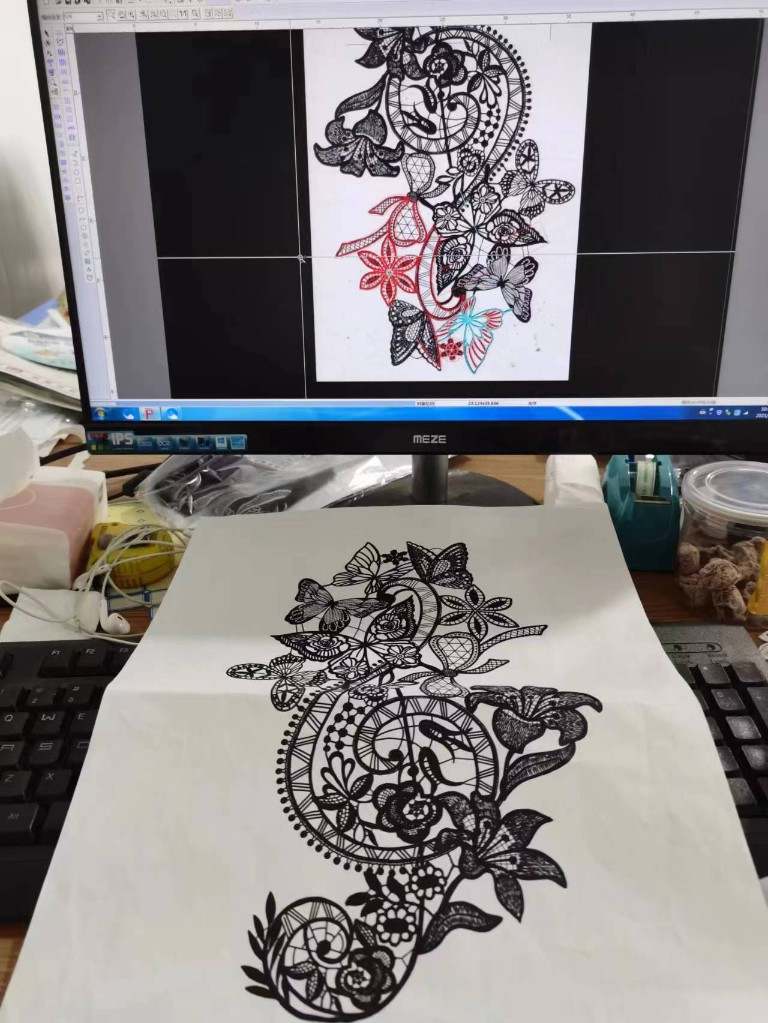
Transforming lace designs into reality, images are inputted into a computer. Advanced software interprets intricate patterns, instructing specialized machines to meticulously weave threads. The result is an exquisite lace creation, blending technology with craftsmanship, offering precision and efficiency while preserving the artistry of lace production.
In ready-to-wear fashion, lace has become a staple in modern wardrobes. Blouses, dresses, skirts, and even outerwear feature lace accents that can transform everyday clothing into pieces of artistry. Lace’s ability to strike a balance between classic femininity and contemporary style makes it a versatile choice for fashion designers and consumers alike.
Moreover, lace isn’t limited to clothing. It has also made its mark in the world of accessories. Lace gloves, scarves, and handbags offer a touch of elegance and grace to any ensemble. Lace is also used creatively in footwear design, adding an unexpected twist to shoes and boots.
The adaptability of lace extends beyond fashion. It continues to be used in home decor, particularly in curtains, table linens, and bedding, where its delicate patterns and textures enhance the ambiance of living spaces.
In the realm of bridal fashion, lace remains the quintessential choice for wedding gowns. The tradition of wearing lace on one’s wedding day endures, symbolizing purity and timeless beauty. Modern brides have a vast array of lace options to choose from, including both traditional and contemporary designs.
Technology has played a pivotal role in lace production, allowing for intricate and innovative designs. Computer-aided design (CAD) and laser-cutting technology have enabled the creation of lace patterns that were once considered too complex to achieve. These advancements have expanded the possibilities for lace design, pushing the boundaries of what can be accomplished with this delicate fabric.
In conclusion, lace’s enduring appeal in the modern world of fashion is a testament to its timeless beauty and adaptability. From traditional craftsmanship to cutting-edge technology, lace has evolved while retaining its essence of sophistication and elegance. It continues to be a canvas for creativity, offering designers and consumers a versatile and enchanting medium for self-expression and style. Whether it graces the runway or adorns everyday clothing, lace remains a symbol of refinement and grace in the 21st century.
Conclusion
Lace is a testament to human ingenuity and artistic expression. Its intricate patterns, rich history, and cultural significance make it a timeless fabric, ever-evolving and always enchanting. Whether draped on a bride, showcased in a museum, or worn casually on a sunny day, lace remains a beloved piece of our shared cultural tapestry.
In conclusion, lace stands as a testament to human ingenuity and artistic expression. Its intricate patterns, rich history, and profound cultural significance collectively weave a narrative of timeless beauty. Lace is not merely a fabric; it is a living embodiment of craftsmanship, tradition, and artistry that continues to evolve and enchant.
From adorning brides in their most cherished moments to gracing the halls of museums as intricate works of art, lace transcends generations and cultures. Its delicate threads have the power to evoke a sense of elegance, sophistication, and nostalgia that resonates with people around the world.
Lace’s enduring appeal lies in its adaptability, seamlessly transitioning from the Renaissance to the digital age, blending tradition with innovation. Whether draped on a bride, showcased in a museum, or casually worn on a sunny day, lace remains a beloved and cherished piece of our shared cultural tapestry. It symbolizes not only the beauty of the past but also the enduring creativity and passion of those who continue to craft and appreciate this exquisite fabric. In lace, we find a connection between the past and the present, a testament to the timelessness of human creativity and the enduring allure of artistry.
FQAs:
1. What is lace, and how is it defined?
- Lace is a delicate fabric characterized by intricate patterns and artistic interlacing of threads, often created through various techniques such as needlework or bobbin lace-making.
2. Where did lace originate?
- The exact origins of lace are debated, but it is generally believed to have developed in Italy and Flanders during the late 15th and early 16th centuries.
3. What are some famous types of lace from history?
- Examples include Venetian lace, Brussels lace, Alençon lace, and Chantilly lace, each with unique characteristics and regional origins.
4. What was the role of lace during the Renaissance?
- The Renaissance marked a significant period for lace, where it became a symbol of luxury and refinement, adorning clothing, interiors, and accessories.
5. How did lace-making evolve during the 17th and 18th centuries?
- These centuries are often considered the golden age of lace, with lace production expanding across Europe and becoming a status symbol among European nobility.
6. Who famously wore lace during this era?
- Queen Elizabeth I of England was renowned for her lavish lace collars, exemplifying the use of lace as a status symbol.
7. How did the Industrial Revolution impact lace production?
- The Industrial Revolution brought about machines like John Heathcoat’s bobbin-net machine in 1809, revolutionizing lace production by making it faster and more accessible.
8. What challenges did machine-made lace initially face compared to handcrafted lace?
- Machine-made lace struggled to replicate the intricate detailing and artistry of hand-crafted lace, especially in its early stages.
9. How has lace adapted to the modern era?
- Lace has remained a crucial part of the fashion world, embracing modern technologies, new synthetic fibers, and innovative techniques to stay relevant.
10. How is lace used in modern fashion?
- Lace is used in everything from haute couture to everyday wear, adding sophistication and elegance to clothing, accessories, and even footwear.
11. Is lace still used in bridal fashion today?
- Absolutely. Lace remains a quintessential choice for wedding gowns, symbolizing purity and timeless beauty.
12. Are there any cultural meanings associated with lace?
- Yes, lace holds cultural significance in various contexts, such as weddings, traditional attire, and artistic expression, where it symbolizes purity, elegance, and creativity.
13. Can you provide examples of lace in traditional attire from different cultures?
- Certainly. Belgium and Malta, for instance, have traditional dresses that prominently feature lace, often worn during special occasions.
14. How has technology influenced lace production and design?
- Technology, including computer-aided design (CAD) and laser-cutting, has expanded the possibilities for lace design, allowing for intricate and innovative patterns.
15. Is lace only used in clothing, or does it have other applications?
- Lace is versatile and used in home decor, including curtains, table linens, and bedding, enhancing the ambiance of living spaces.
16. How has lace retained its allure over the centuries?
- Lace has remained captivating by combining tradition with innovation, continually evolving while preserving its timeless beauty and craftsmanship.
17. Are there specific museums or exhibitions dedicated to lace?
- Yes, many museums worldwide exhibit lace collections, celebrating its historical and artistic significance.
18. How can I care for lace items to ensure their longevity?
- Lace should be handled delicately, and washing should follow specific guidelines depending on the type of lace and materials used.
19. Can you recommend any books or resources for further exploration of lace history and design?
- There are several books and online resources that delve deeper into the history and techniques of lace-making, catering to both enthusiasts and scholars.
20. How can I incorporate lace into my own fashion or decor choices?
- Lace can be added to clothing, accessories, or home decor to infuse a touch of sophistication and elegance. Be creative and explore various ways to incorporate lace into your personal style.

